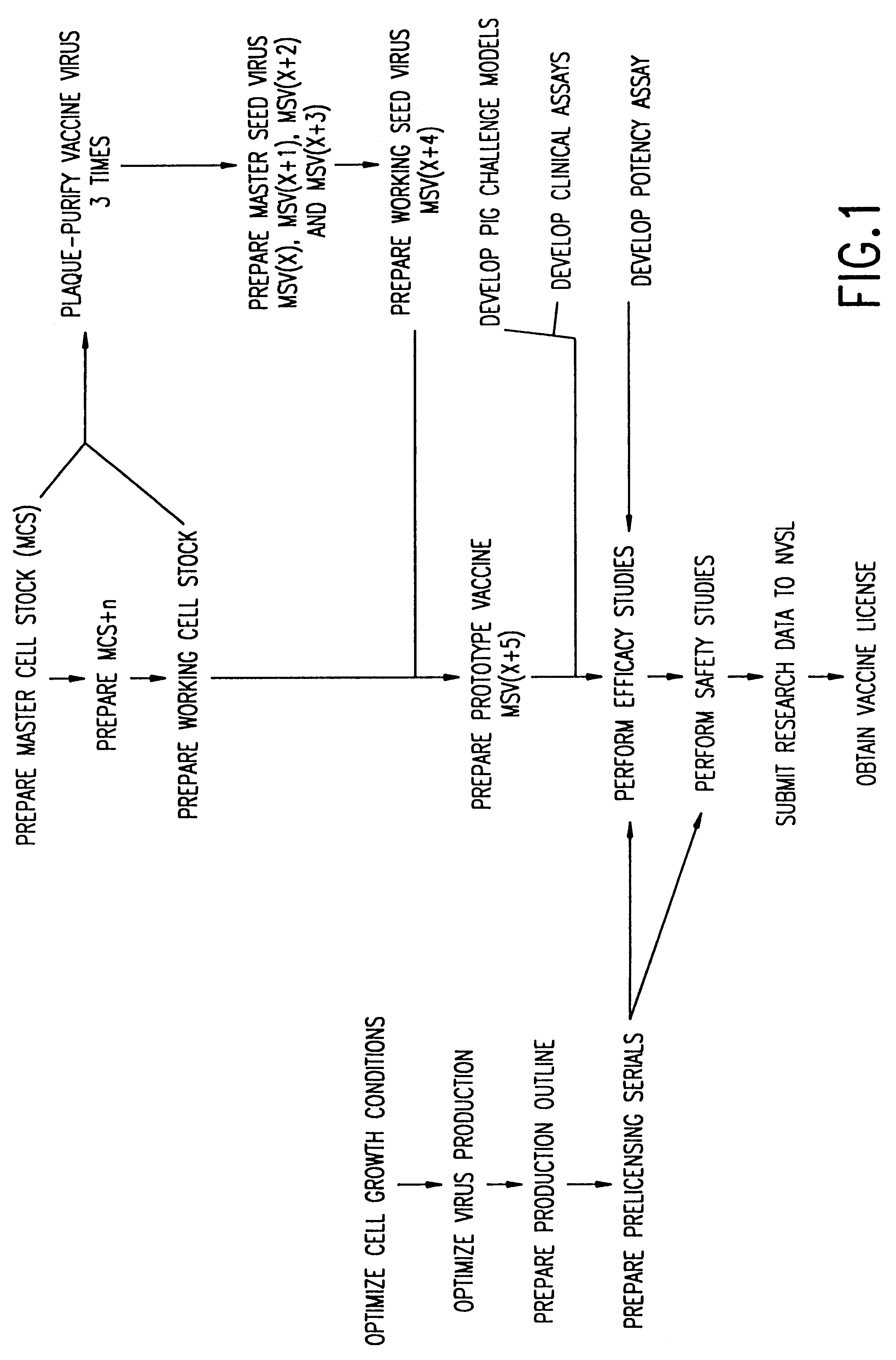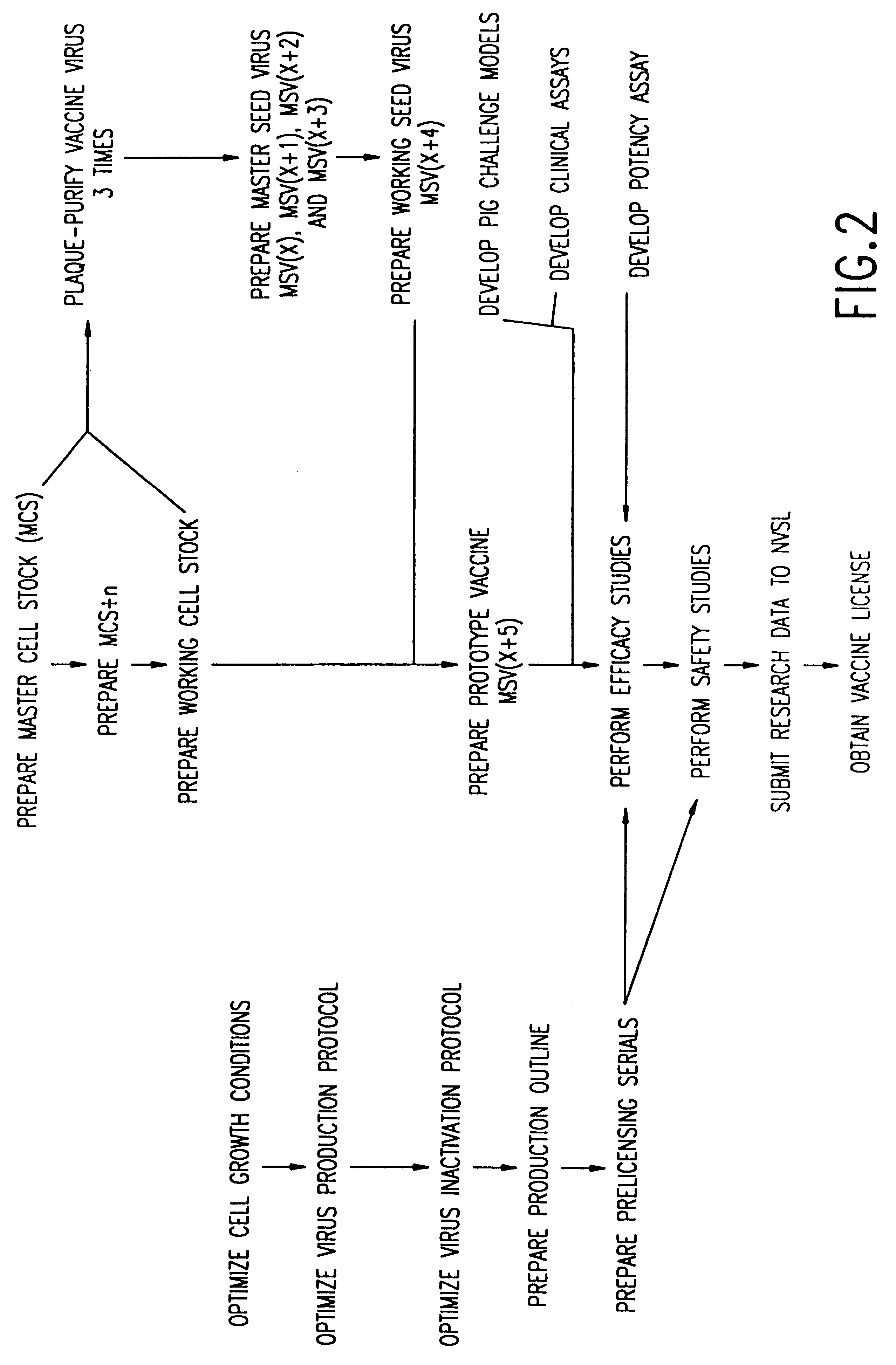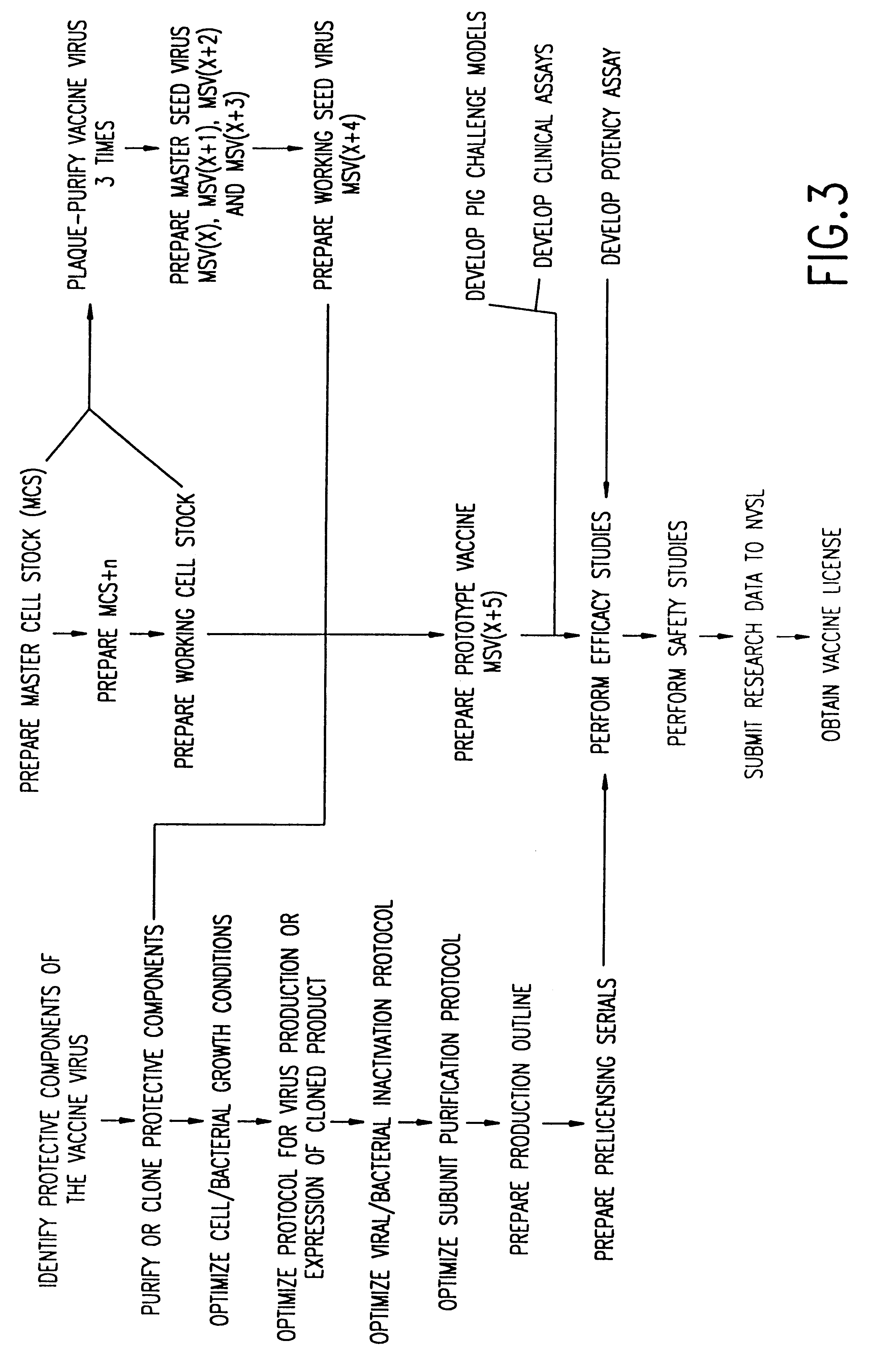Method of producing a vaccine which raises an immunological response against a virus causing a porcine respiratory and reproductive disease
a technology of immunological response and porcine respiratory and reproductive disease, which is applied in the field of vaccines, can solve the problems of inability to achieve actual practice, adversely affect the pig farming industry, and the cancellation of pig shows
- Summary
- Abstract
- Description
- Claims
- Application Information
AI Technical Summary
Benefits of technology
Problems solved by technology
Method used
Image
Examples
experiment ii
(I) Materials and Methods
(A) Field Case Material and History
A pig was obtained from a herd which experienced PRRS with persistent severe nursery pneumonia, and had only 20 viable pigs from the last 42 litters farrowed. The pig was necropsied, and samples of lung tissue was collected and homogenized using standard, sterile homogenization techniques. The lung homogenate (10% w / v) prepared in Eagle's minimal essential medium (MEM) and filtered through a 0.22 m.mu. filter was used as inoculum.
(B) Cells
A continuous cell line, designated PSP-36, was derived from MA-104 cells, which were purchased from Whittaker Bioproducts, Inc. (Walkersville, Md.). A sample of PSP-36 cells were separately propagated, and this cell line was designated PSP-36-SAH. Swine alveolar macrophages and approximately ninety other cell lines, examples of which are described in Table II hereinbelow were used for virus isolation.
(C) Virus Isolation
Lung homogenates prepared as described above were clarified either at 2...
experiment 92.1
(A) Experiment 92.1 SPF
Lung filtrate from ISU-12 above was inoculated intranasally into six specific pathogen-free (SPF) pigs that were 5 weeks old. Pigs were killed at 3, 5, 10, 28, and 43 days post inoculation (DPI). By 3 DPI, the ISU-12 pigs had exhibited severe respiratory distress and pyrexia. These signs persisted for 10-14 days. Gross pulmonary lesions were characterized by severe multifocal grey-tan consolidation of 60% of the lungs. There was also moderate cardiomegaly and accumulation of abdominal fluid. Microscopic changes were characterized by severe proliferative interstitial pneumonia with type II pneumocyte proliferation, syncytial cell formation, alveolar exudation, and mild interstitial thickening with mononuclear cells. There was a mild nonsuppurative myocarditis, a severe encephalitis, and a moderate lymphoplasmacytic nephritis. The ISU-12 experimental pigs necropsied at 10 and 28 days had seroconverted to the PRRS agent as confirmed by NVSL.
(B) Experiment 92.3 SP...
experiment 92.10
(C) Experiment 92.10 SPF
Clinical signs in inoculated pigs included severe lethargy and pyrexia, moderate anorexia, and moderate-to-severe respiratory distress, observed 5-22 DPI. Moderate tearing was present in these pigs throughout the experiment. Microscopic lesions included mild proliferative interstitial pneumonia and severe necropurulent tonsilitis at 5 DPI. Moderate multifocal PIP with type II proliferation, alveolar exudation, multinucleated giant cells, and syncytial cell formation was observed at 10 DPI. Moderate multifocal encephalitis with perivascular cuffs and gliosis was also observed at 10 DPI. Mild periportal lymphomacrophagic hepatitis, mild nonsuppurative myocarditis and rhinitis was detected at 10 DPI. At 26 DPI, there was severe interstitial pneumonia, characterized by marked multifocal interstitial thickening with mononuclear cells, moderate multifocal type II pneumocyte proliferation, moderate amounts of mixed alveolar exudate, and loose peribronchiolar cuffs o...
PUM
| Property | Measurement | Unit |
|---|---|---|
| diameter | aaaaa | aaaaa |
| time | aaaaa | aaaaa |
| time | aaaaa | aaaaa |
Abstract
Description
Claims
Application Information
 Login to View More
Login to View More - R&D
- Intellectual Property
- Life Sciences
- Materials
- Tech Scout
- Unparalleled Data Quality
- Higher Quality Content
- 60% Fewer Hallucinations
Browse by: Latest US Patents, China's latest patents, Technical Efficacy Thesaurus, Application Domain, Technology Topic, Popular Technical Reports.
© 2025 PatSnap. All rights reserved.Legal|Privacy policy|Modern Slavery Act Transparency Statement|Sitemap|About US| Contact US: help@patsnap.com



